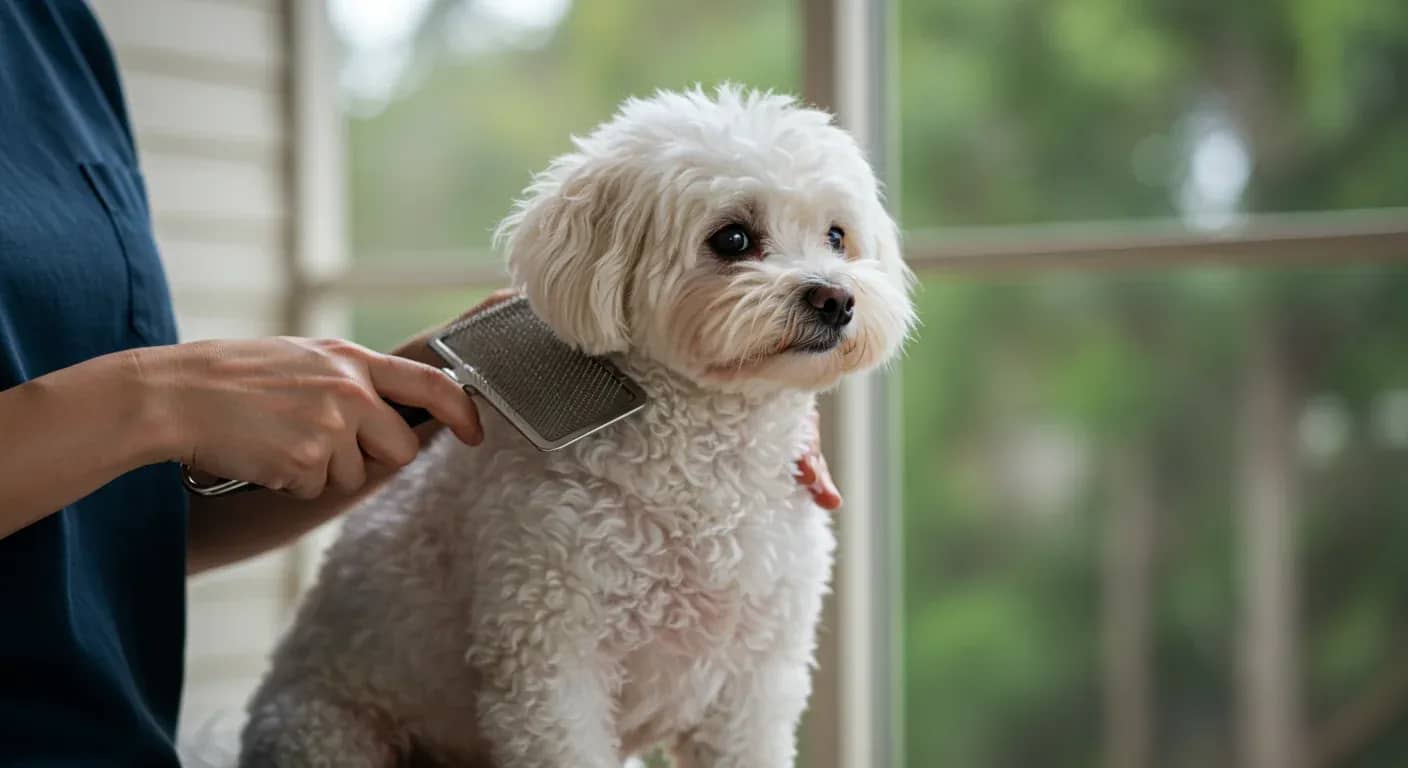At a glance
- Brush your Akita 2-3 times weekly during normal periods, daily during seasonal shedding
- Use an undercoat rake and slicker brush to manage their dense double coat effectively
- Expect two major "coat blowing" seasons annually lasting 2-8 weeks each
- Bathe only when necessary (every 2-3 months) to preserve natural coat oils
Understanding your dog's remarkable double coat
You might notice that your Akita's coat feels different from other breeds you've encountered. That's because these dogs possess a sophisticated double coat system consisting of a dense, soft undercoat for insulation and a harsh, straight outer coat for protection. This remarkable coat structure was designed for harsh climates and provides excellent weather resistance.
Many owners worry when they first experience their dog's shedding patterns. Research tells us that these dogs experience two major shedding seasons annually, known as "blowing coat," typically occurring in spring and autumn. During these periods, they shed their entire undercoat in large clumps over 2-8 weeks. Outside of these seasons, shedding remains moderate and manageable with regular grooming.
Understanding this natural cycle helps you prepare for what's ahead. When your dog begins dropping clumps of soft undercoat around your home, this isn't a health concern but rather a normal seasonal transition.
Essential brushing techniques and timing

The foundation of coat care lies in consistent brushing with the right technique. During normal periods, brush your dog 2-3 times per week. When shedding season arrives, daily brushing becomes essential for managing the volume of loose coat.
Your toolkit should include an undercoat rake or deshedding tool for removing loose undercoat during shedding season, a slicker brush for general brushing and detangling, a pin brush for everyday maintenance, and a steel comb with wide-set teeth for working out mats and tangles.
Work in sections, starting from the neck and moving toward the tail. Brush against the grain first to reach the undercoat, then brush with the grain to smooth the coat. Pay special attention to the neck, behind the ears, and under the legs where matting commonly occurs. Use your steel comb to gently work out any mats, never cutting them with scissors as this can injure the skin.
A helpful trick involves lightly misting the coat with water before brushing to reduce static and make grooming easier. This simple step can transform a challenging grooming session into a more pleasant experience for both you and your dog.
Bathing guidelines for healthy skin
Have you wondered why your dog doesn't seem to need frequent baths? Their double coat naturally repels dirt and debris, meaning you should bathe only when necessary, typically every 2-3 months or when visibly dirty. Over-bathing strips natural oils and can lead to dry, irritated skin.
When bathing becomes necessary, use a dog-specific shampoo that's gentle and moisturising. Earthbath All-Natural Pet Shampoo offers moderate cost and wide availability, whilst Veterinary Formula Clinical Care Hypoallergenic Shampoo provides a higher-cost option for sensitive skin. Thoroughly rinse to prevent shampoo residue, which can irritate the skin, and dry the coat completely, especially the undercoat, to prevent dampness-related skin issues.
The drying process deserves particular attention. These dogs' thick undercoat can retain moisture for hours if not properly dried, potentially leading to skin problems or unpleasant odours.
Managing seasonal coat changes

When it comes to shedding seasons, preparation makes all the difference. During these periods, your daily brushing routine should focus on using an undercoat rake and deshedding tool to remove loose fur before it ends up throughout your home. A high-velocity dryer can help remove loose undercoat more efficiently, though this represents an optional investment.
Many owners find that increasing their vacuuming frequency during these periods helps maintain household cleanliness. The volume of shed coat can seem overwhelming initially, but remember this intensive shedding typically lasts only 2-8 weeks before returning to normal levels.
Sometimes the reasons for excessive shedding are medical, sometimes related to diet. A balanced diet rich in omega-3 and omega-6 fatty acids supports healthy coat condition. Consider supplements like fish oil if recommended by your veterinarian, as proper nutrition directly impacts coat quality and shedding patterns.
Addressing common coat problems
Matting represents the most frequent grooming challenge owners face. This occurs primarily due to infrequent brushing, especially in high-friction areas like the neck, legs, and behind the ears. Regular brushing and use of a steel comb prevent most matting issues, though severe mats may require professional grooming intervention.
Skin irritation can manifest as redness, itching, flaking, or bald patches. Prevention involves regular grooming, proper bathing techniques, and prompt attention to any skin changes. If symptoms persist or worsen, consult a veterinarian for proper diagnosis and treatment rather than attempting home remedies.
Research shows that consistent grooming routines prevent most coat-related problems before they develop into serious issues requiring veterinary intervention.
Professional grooming considerations
Consider professional grooming services for deep deshedding treatments, particularly during seasonal coat changes. Look for groomers experienced with double-coated breeds, as they understand the specific techniques required for these dogs' unique coat structure.
Professional costs vary by region but typically range from moderate to high. However, the investment often proves worthwhile during intensive shedding periods when professional-grade equipment can remove loose undercoat more efficiently than home grooming alone.
Between professional appointments, maintain your regular brushing schedule to prevent matting and reduce the intensity of seasonal shedding periods.
Complete care routine essentials
Beyond coat care, complete grooming includes nail trimming every 3-4 weeks using quality nail clippers or grinders. Take care not to cut the quick, the blood vessel inside the nail. Weekly ear checks help identify wax buildup, redness, or odour that might indicate problems requiring veterinary attention.
Clean ears with vet-approved ear cleaner when needed, avoiding inserting anything deep into the ear canal. These routine maintenance tasks, combined with regular coat care, ensure your dog remains comfortable and healthy.
Monitor for any sudden changes in coat texture, shedding patterns, or skin condition, as these may indicate underlying health issues requiring professional evaluation. Patience and consistency in your grooming routine builds a strong bond whilst preventing long-term coat problems.



